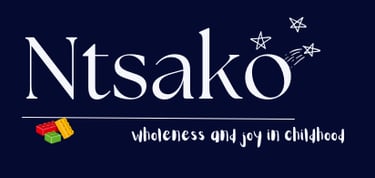
Issue 3 - Reflective Piece
A reflection on the beauty of childhood learning and how the theories we've discussed go together in real life
ISSUE 3
VJ Tlakula
7/8/20252 min read


Learning how to write our alphabets
I remember once when I was subbing (substituting) in for a class and was teaching some Grade Rs to write their alphabet. I gave them their little workbooks and went from child to child spending time checking their alphabet with them, particularly letting them practice the letters they were struggling with.
I recall how one of the little boys was really struggling with the letter "a". He just couldn't get it right. I kept showing him, and he kept trying, but somehow it just wasn't clicking. After quite a few attempts with us working slowly, and me guiding his hand, he finally made some semblance of a real "a". I was so excited, and so was he and we both did a celebratory "yaay!".
Afterwards, I said "okay, you've got it right, now keep practicing exactly how you did it". Filled with confidence, he attempted it again...and immediately messed it up again. He tried to celebrate again, but I gently told him it was wrong again. He wasn't too beat up about it, but I realised that this was an example of learning, reinforcement, environmental stimulation, modelling, and practice all in one. It was also a reflection of his brain's current development level and capacity.
His little brain was still developing. It probably hadn't even grasped fully what they were meant to be doing. And while he had the capacity to be able to learn and do this well (his brain was at that stage), he still never had the capability. That is what needed to be trained, stimulated, and encouraged. That is where those neurons needed to learn the motor movement and learn to associate a sound with a shape. And he needed that reinforcement. I thought about how we were all once at that stage where we couldn't write or understand, yet our brains learned and developed and now we are able to write the letter "a" without even trying or thinking much about it.
There are many elements of the discussed learning theories in my example here.
I performed as the More Knowledgeable Other Vygotsky speaks of, modelling to him how he should draw (Bandura) and cheering on and supporting him. Even when he got it wrong, I helped him. He was conditioned to sit and behave, listen to me, and try his best, that way he could get a reward (Skinner). That reward was quite self-centred, as children are at that age (Piaget), but it was necessary for him to learn. His learning happened through trial and error, but he even though he constantly made mistakes, he was at that point of his development where he would be able to grasp and perform this task, albeit with some supportive help.
The takeaway of this is that children are constantly learning and their environment is key to this. It is our responsibility to form that safe, supportive space for them.
Through this real-world example, we see that each of these theories discussed, while not perfect on their own, have important things to contribute to our knowledge of children's learning and development. They can all be used in various ways, with various strengths to continue to learn all about those fascinating creatures called children.
Share your Comments Below!
Please feel free to reach out with any comments, questions, and child-related stories
Celebrating childhood and development
© Ntsako Wholeness and Joy in Childhood 2025. All rights reserved.
Copyright Vutlhari Joy Tlakula 2025. All Rights Reserved.


